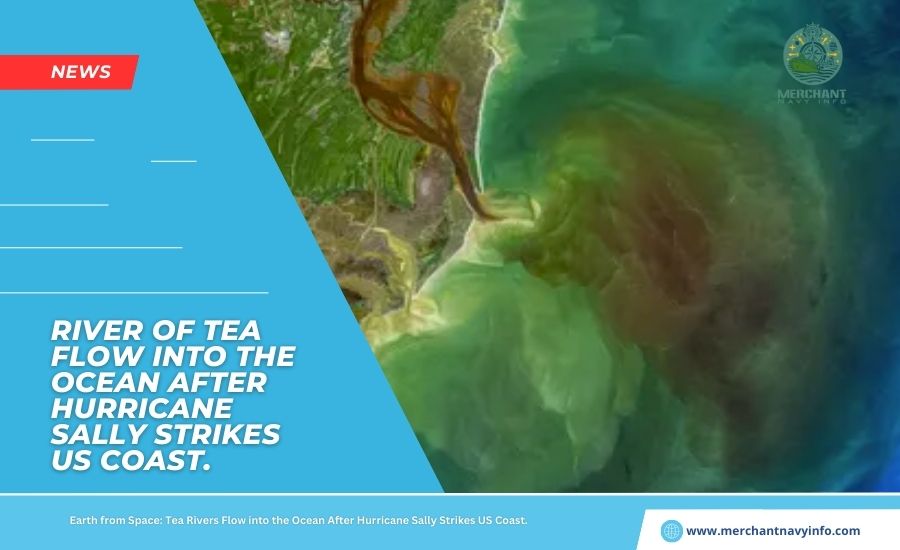
Earth from Space: River of Tea Flow into the Ocean After Hurricane Sally Strikes US Coast.
Satellite imagery from 2020 shows “black water” flowing out of Winya Bay, South Carolina. After Hurricane Sally made landfall and caused widespread flash flooding.
This 2020 satellite image shows tea-shaped “black water” flowing into the ocean from Winya Bay, South Carolina. About two weeks after Hurricane Sally made landfall and caused widespread flash flooding.
Winya Bay is a coastal estuary near Georgetown, South Carolina, that flows into the Atlantic Ocean. It is fed by four blackwater rivers: the Waccamaw, Pee Dee, Black, and Sanpete, which flow through eastern South Carolina.
River of Tea Flow into the Ocean After Hurricane Sally Strikes
Blackwater rivers flow through swamps, wetlands, forests, and other ecosystems rich in decaying plants. As they decompose, these decaying plants release chemicals such as tannins, phenols, and humic acid. Which turns the water brown, similar to brewing tea, according to NASA’s Earth Observatory.
The stuff you’re staining is called dissolved organic matter (CDOM). After heavy rains, floodwaters build up further and feed nearby rivers, which then wash into Winia Bay and then into the ocean.
On September 16, 2020, Hurricane Sally made landfall in Alabama with maximum sustained winds of about 110 mph (177 km/h). The Category 2 storm dropped up to 30 inches (76 cm) of rain in Florida, Alabama, Georgia, South Carolina, and Louisiana. Causing flash flooding in much of the state, according to the National Weather Service.
On October 1 (the day this photo was taken), monitoring stations at Winia Bay showed CDOM levels downstream were more than 50% above average. According to NASA’s Earth Observatory, most of the CDOM ends up in the ocean.
Furthermore, high levels of CDOM in the ocean mean less blue light can penetrate deep into the water column. Red light is only absorbed deep below the surface, making the water appear rusty above.
“If the phytoplankton don’t have pigments that can absorb red light, they can’t photosynthesize,” Tammi Richardson, an oceanographer at the University of South Carolina, told NASA’s Earth Observatory at the time, adding that this could have significant impacts on the food chain in coastal ecosystems.
However, according to NASA’s Earth Observatory, some plankton, cryptophytes, and diatoms, can still absorb red light, allowing them to grow in dark waters.









